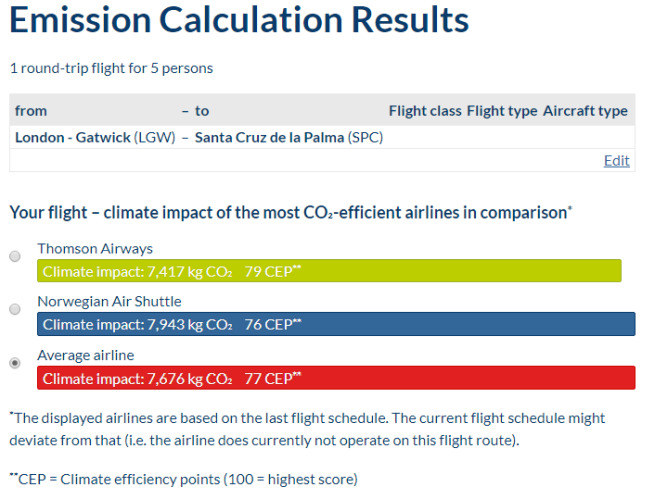We fly more than ever. International holidays, business, sporting events, and family visits require us to jump on a flight. Scheduled airline passenger numbers increased from 1.9 billion in 2004 to 4.3 billion in 2018. This figure is expected to rise in coming years.
At the same time, many global travelers are taking an interest in their carbon footprint. One easy way of reducing your carbon footprint is through carbon offsetting schemes.
Sounds interesting? Here are three sites to help you offset your international flights.
What Is Carbon Offsetting?
Carbon offsetting is the process of compensating for carbon dioxide emissions arising from human activity. In this case, it is about how you can offset your carbon footprint when you take a flight.
The idea is that you pay a small amount extra to contribute to schemes that encourage or deliver emissions savings around the globe.
The premise of offsetting international flight emissions isn't new. In 2009, travelers at San Francisco International Airport had the chance to visit a climate kiosk. The climate kiosk would inform travelers about the footprint of their flight and advise on projects that would offset the carbon emissions.
Unfortunately, it didn't take off. The lack of clarity regarding the working of offsetting and difficulty figuring out which projects were "good" turned travelers away.
Carbon offsetting is now a lot easier. There are numerous websites advising travelers on offsetting schemes and projects. Carbon offsetting standards also help travelers understand if an offset project is worthwhile.
Here are five other projects you can use to fight climate change.
What Are Carbon Offsetting Standards?
There are different carbon offsetting standards and a lot of offsetting alphabet soup to go along with it. However, the key carbon offsetting standards to consider are the Gold Standard (GS, or GS VERs) and Plan Vivo.
The Gold Standard protects against the most common issues found with carbon offsetting, such as project verification, impermanence, and leakage (just shifting the emissions to another location). The Gold Standard certifies over 1,700 projects across 80 countries. It also requires projects to help the local population as well as reduce carbon. Gold Standard projects consistently help create value, too.
The Plan Vivo Standard is the official certification of the Plan Vivo Foundation. The certification confirms that the carbon offsetting project ensures mutual benefit for the ecosystem, biodiversity, and the local population. This framework allows each aspect to achieve growth. The Plan Vivo Standard covers a spectrum of land management and development projects and like the Gold Standard, helps create value for smaller communities.
1. C-Level Flight Carbon Calculator
The C-Level Flight Carbon Calculator is a very popular carbon offsite calculator. C-Level works closely with the Plan Vivo Foundation to give you a wide range of choice on the offset projects you fund.
Each project is chosen specifically for its benefits to both biodiversity and the local population, and you can track your carbon offset project using the IHS Markit.
Enter your flight details, number of passengers, and payment option, then select Offset Your CO2. You can then choose the project you want to offset your carbon with and complete the payment process.
2. MyClimate
The MyClimate carbon offset calculator uses the highest independent quality standards for its carbon offset projects, including the Gold Standard and Plan Vivo. Using these two standards ensures that the carbon offset funds head to the best projects making the most impact, in locations where the difference will truly help.
One handy MyClimate feature is that you can offset carbon for alternative transport methods, and even events, your business, personal projects, cruises, and more.
Head to MyClimate, choose your transportation type or event and enter the requisite details. You can then select from a range of carbon offsetting projects or let MyClimate assign the funds on your behalf.
3. Atmosfair
All Atmosfair carbon offset projects must meet the Gold Standard. Furthermore, the Atmosfair carbon calculator is considered one of the best available, giving a detailed breakdown of your emissions.
Head to the site and select Offset Now. Choose between a flight, a fixed offset (for instance, offsetting your electricity bill), or an event. Enter the relevant information regarding your selection, confirm the payment amount, and continue.
You can select the carbon offsetting projects you want to contribute to on the final page.
Is Carbon Offsetting Flights Effective?
I'm not going to say that carbon offsetting is a magic cure-all. It isn't. Carbon offsetting is, however, a useful tool to help balance your lifestyle. Offsetting your international flight carbon emissions helps to balance the CO2 books, but other lifestyle changes are important, too.
The important thing to remember is that carbon offsetting isn't expensive. Offsetting a flight from London to Nairobi only costs an extra $20. In the grand scheme of things, that's a drop in the ocean; 8 take-away coffees.
Positively, international airlines will begin offsetting carbon emissions automatically in the near future. By 2021, a UN agreement called the Carbon Offsetting and Reduction Scheme for International Aviation (CORSICA), will see airlines account for the carbon offsetting of their passengers. It switches the emphasis back to the airlines to take care of the carbon offsetting, making the entire process easier to manage and vastly more effective.
It isn't just airlines and international passengers considering their impact on the globe.
In September 2018, Lyft announced it would become one of the largest voluntary carbon offset purchasers. It aims to make all rides using its cars carbon neutral.
Global shipping behemoth, Maersk, is introducing carbon-neutral biofuel, while the rest of the global shipping industry finally begins to catch up with the progress made in aviation.
Want to shift to a more ethical and eco-friendly way of using technology? Take a look at several ways you can recycle electronics and avoid e-waste.



